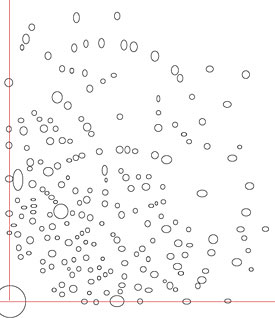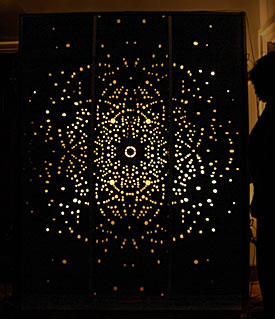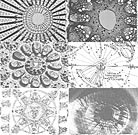MANDALA CANOPY
 algorithmic sketch |
 6x7 luminous canopy panels |
 Mandala is a Sanskrit word meaning "circle". It consists of a series of concentric forms with three basic properties: a center, symmetry, and cardinal points. It is a religious archetype in Tibetan Buddhism -- a symbolic ordering of the cosmic elements, used as an aid to meditation. Its form is also inherent in many natural structures, such as the two twigs on the top left. Mandala is a Sanskrit word meaning "circle". It consists of a series of concentric forms with three basic properties: a center, symmetry, and cardinal points. It is a religious archetype in Tibetan Buddhism -- a symbolic ordering of the cosmic elements, used as an aid to meditation. Its form is also inherent in many natural structures, such as the two twigs on the top left. Carl Jung believed that all symbolic mandalas originate in dreams. Through the construction of mandalas born of an interior impulse, his patients were able to identify unconscious conflicts and relate them to a larger cosmological paradigm. | |
 |
 |
|
The mathematical, spiritual, aesthetic, and symbolic implications of the Mandala seemed appropriate to the construction of a sacred dream space. I wanted the space to have symmetry found in nature, a central meditative point, and the feeling of a night sky. The process began as a study of mandalas and x-ray diffraction patterns. Using script based image analysis to identify points of contrast, I generated rough points of symmetry. These points were refined in Illustrator and resized to a 6x7 foot template. To create the canopy, the study was printed on a large 1983 Schlumberger pen plotter, and points were removed with an exacto knife. The canopy frame was designed and cut from aluminum alloy components. |
|